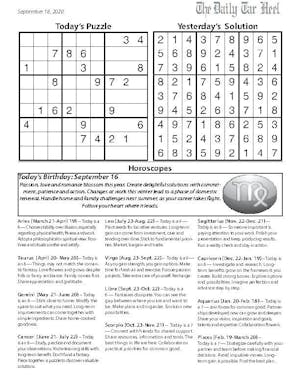How do athletes recruited by UNC show they have “grit” — the determination it takes to succeed in one of the nation’s top public universities?
That, and many other questions related to the recruitment of student athletes, was debated Friday during the Student-Athlete Academic Initiatives Working Group meeting.
As part of its work to examine and change 22 processes related to athletics, on Friday the group heard the perspectives of several North Carolina coaches, including football, basketball and women’s soccer.
Standards of admission
Dean of Undergraduate Admissions Steve Farmer, a member of the group, explained to the group how the admissions and athletic departments work together to decide if an athlete being recruited could actually be admitted.
“Once the compliance folks review the transcript, the students’ files come to our office and we review them and advise them on the admissibility,” Farmer said. “It’s a back and forth over a long period of time rather than a clean handoff.”
North Carolina women’s soccer coach Anson Dorrance said raising the admissions standards for recruited athletes would be a challenge for the team.
He said the team uses UNC’s academic reputation to lure recruits, but other competitive teams —such as Stanford University and the University of Virginia — also have that reputation.
“We’re against Stanford — that’s a tough recruiting battle for us,” he said. “If we’re forced to have an admissions criteria that’s as tough as Stanford…We wouldn’t win. In our 33 head-to-heads with Stanford, we’ve won six times.”
Predicting success
One challenge most coaches cited was how to predict whether a recruit would be successful once in college.
The admissions department began using a formula last year to predict players’ projected GPA for the first year of college. This method, which separates athletes into three groups, also helps determine whether the athlete is considered for special admission or not admitted at all.
Executive Vice Chancellor and Provost Jim Dean, a leader of the group, asked the coaches how they also use their judgment with potential players.
“You don’t know everything about an athlete just from the test scores,” he said. “From an academic standpoint, what can you do to know whether someone on the margin is going to do what it takes to succeed?”
C.B. McGrath, an assistant men’s basketball coach, said the key is communicating and meeting with the high school players and the people who know them best.
“If you ask an athlete about their classes, and they say fine… You know where they lie,” he said.
McGrath, echoing what other coaches said at the meeting, said a player’s character is what sometimes makes the difference.
“You’ve got guys who have great test scores, they come in and they really struggle,” he said. “You’ve got guys with the minimum requirements and they’re excelling here. You don’t actually know.
“For us, our demographic, the parental figures aren’t as strong. A lot of times the athletes we recruit don’t have siblings that went to college. Some kids don’t know what’s important going into high school, but if they show improvement, we don’t mind sticking with them.”
‘Decision race’
Coaches also discussed how recruiting earlier and earlier puts pressure on them to make an offer quickly and beat out other schools. Being forced to decide early can distort their predictions of a student’s academic success in college, the coaches said.
“The fear the kid has now is, ‘This might be my best offer‘…We’re forced to get in this early decision race and we’re trying to guess if this kid is going to make it,” Dorrance said. “And the player has this fear that they’re not going to be invited to the prom.”
‘A foundation’
Members of the group discussed how to emphasize the importance of education to athletes, some saying these perceptions are formed in middle school and high school.
In a time where the career span of a professional athlete is shrinking and more players are facing challenges such as bankruptcy, getting an education ensures that players will have a future, Dean said.
“Even once they get the brass ring, their lives don’t turn out how they wanted,” he said. “Does the average student know this, that they really need an education — even if they are the next big thing?”
McGrath said as a coach for UNC’s junior varsity basketball team, about 12 of the 13 players thought they could one day play professionally.
“That’s just the nature of the beast.”
To get the day's news and headlines in your inbox each morning, sign up for our email newsletters.



